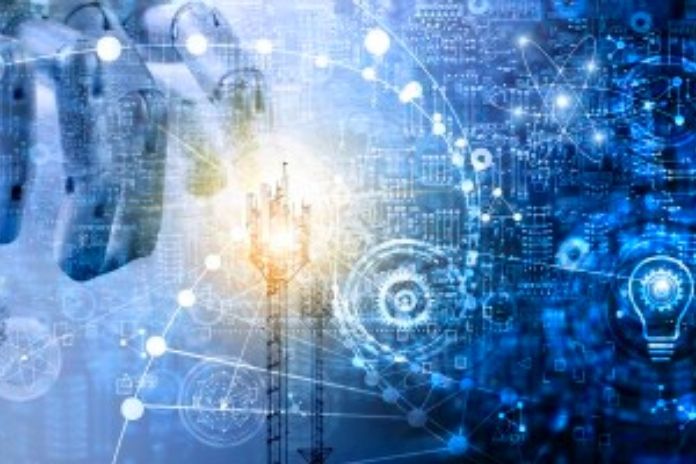The Internet of Things would be the direct interconnection to everyday objects, allowing to send and receive data. Thus, the Internet of Things connects your devices so you can perform new functions, such as remotely controlling bright elements and even receiving status updates alerts.
The Internet of Things refers to the millions of physical devices that exist worldwide that can now connect, collect and share information. That’s thanks to new, low-cost processors. The term Internet of Things is commonly used for those devices that do not necessarily connect to the Internet but can communicate with the network without a user. In this way, a PC might not be considered as an Internet of Things device, but on the other hand, a smartwatch could be.
The Internet of Things is directly related to technological advances and artificial intelligence. Thus, the possibility of transforming our everyday objects into electronic devices is its main feature.
But how does it work? One of the most common buzzwords within technology circles is the Internet of Things. It is a term that is spoken all over the place. These devices can be identified through IPs, sensors, and chip types. Thus, virtually all devices that are connected to a kind of intelligent home are examples of the impact of the Internet of Things on our daily lives:
- thermostats;
- light switches;
- spotlights;
- security locks;
- security cameras and other smart appliances.
Amenities In Your Home
Some elements that belong to the Internet of Things architecture are recognized in intelligent homes. But how about knowing in more detail? Follow the post!
Sensors
Today, several objects and devices (TVs, refrigerators, etc.) are equipped with sensors to collect information about physical conditions such as temperature, pressure, brightness, humidity, or even movement.
Radio Frequency Identification
Technology that allows remote identification through electromagnetic waves. Known as RFID (Radio-Frequency Identification), this technology is widely used in hospitals, stores, etc. For example, it tracks inventory in stores and automatically updates the system, issuing alerts when there are low stocks. In homes, this technology can be used for alarms, for example.
Location Technologies
The well-known GPS or Bluetooth can communicate location information by a smartphone, notebooks, and even vehicles.
Narrow Band IoT Technology
The major technological breakthrough can transmit some amounts of data through efficient signals and receivers that last for a long time. This technology is fundamental, especially in smart cities. You can track situations such as parking spaces, traffic, etc.
Cloud
In other words, the Cloud can process and store data safely through the virtual network. Cloud Computing is present in almost everything we do, from streaming, photo storage, etc. And also in the IoT. The role of the Cloud is basically to support all this technology. The Cloud manages the entire IoT service.
Smart Connectors
One of the most valuable devices in intelligent plugs, connected to a standard outlet, can be controlled by a smartphone. It is possible to manage energy expenditure, such as programming the time when energy will be released for an appliance such as a coffee shop and a toaster.
Smart Lighting
The intelligent lighting system is one of the most popular lamps available today. It can change colors and can be turned on and off according to schedule also from the smartphone.
Electronic Locks
Smart locks where the person will not need keys, as he will automatically open house doors with a simple keyboard that sets a code via smartphone remotely.
Security Systems
Motion detectors were the most advanced devices, but you can combine video, audio, motion detection, night vision, siren, and even air quality sensors with today’s home monitors.
Personal Emergency Systems
They help people with health issues by connecting to a smartwatch and letting family members know that the wearer might need help.
The Internet of Things can collect data from a smart home’s daily activities to help with functions such as:
- inform the hours that the person sleeps;
- the time you wake up;
- programmed coffee machine;
- the food consumed, smart fridge alert;
- who are the visitors (bright bells);
- knowing what children think (smart toys);
- surveillance systems;
- freezers that warn you when something is going to spoil.
Of these small examples, from the simplest to the most complex, some should still take time to be implemented. This demonstrates how close we are to an era focused on technological intelligence.
Consequences And Future Of The Internet Of Things
The development of Internet of Things systems was based on joining physical and virtual resources, allowing users to interact with other devices constantly. These elements used daily include and range from manufactured equipment to mobile devices, such as detectors, thermostats, and others used to gather information through internet resources.
Are there risks of using the Internet of Things? In a way, the chances of this technology are the same as for computers, smartphones, that is, malware. Without a robust security system, devices can malfunction due to viruses and other digital threats. Malicious people can exploit vulnerabilities to take advantage, for example, turning off the house’s locks and thus carrying out thefts.
Also Read: IoT: Controlling Your Business Whenever And Wherever You Are

